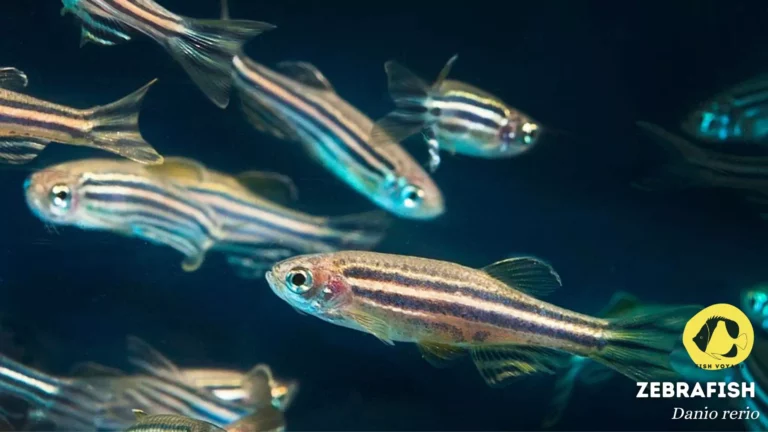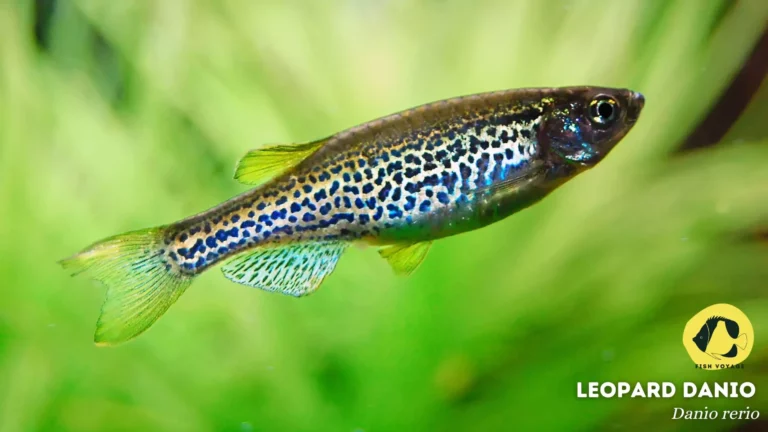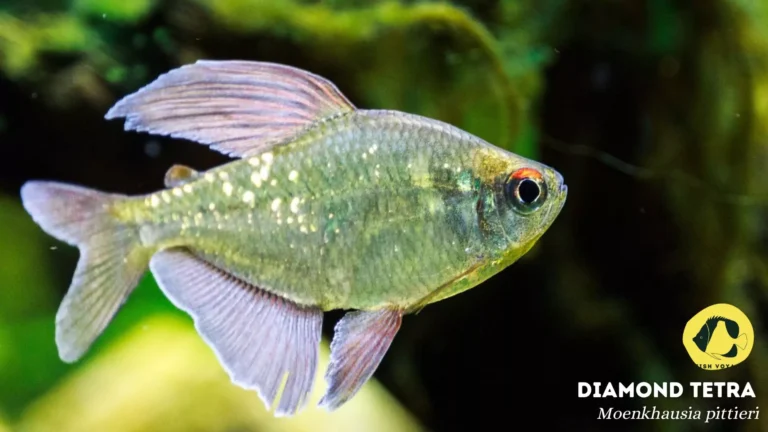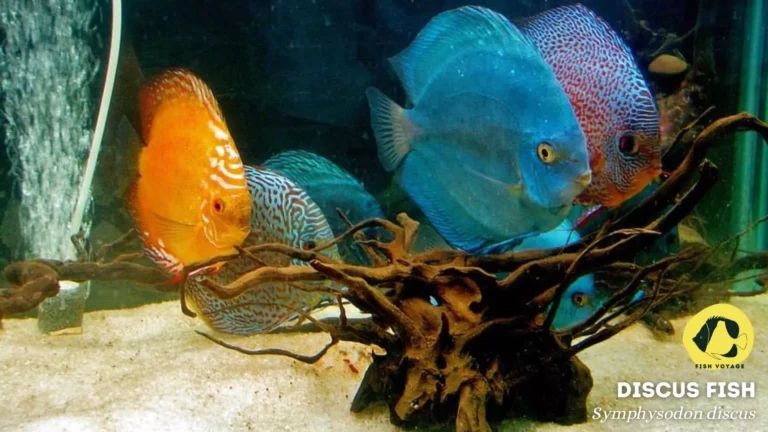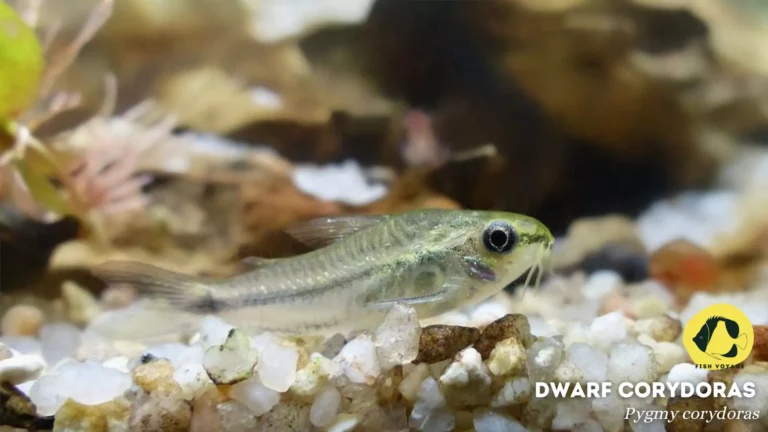Top 10 Coolest Freshwater Fish for Your Tank
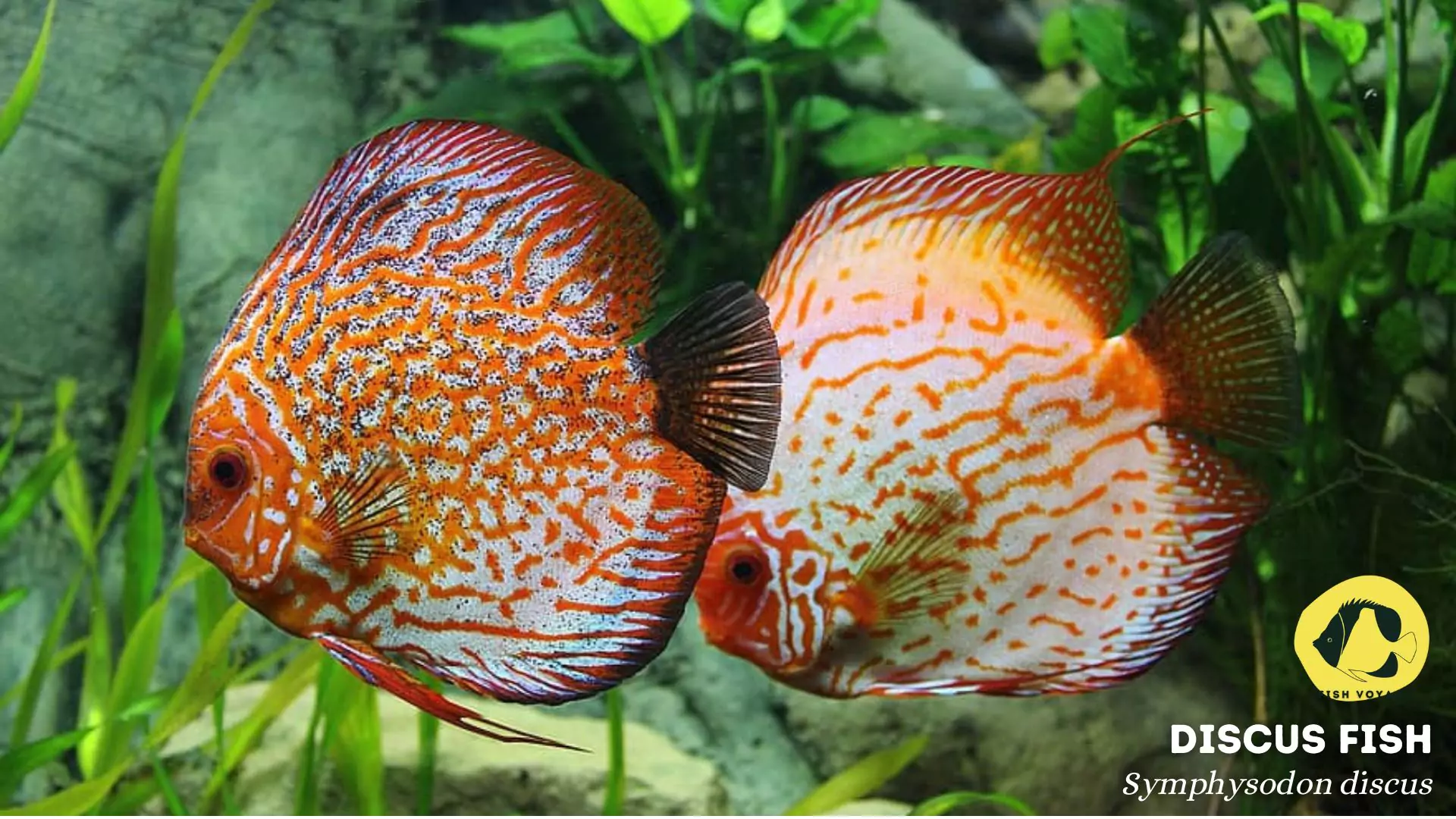
In the enchanting world of aquariums, freshwater fish hold a special allure for enthusiasts worldwide. The fascination with these aquatic wonders lies in the kaleidoscope of colors, intricate behaviors, and the sense of tranquility they bring to any living space. Aquarium keepers often seek not just fish, but captivating personalities that can turn an aquarium into a vibrant, living masterpiece.
Choosing unique and interesting freshwater fish is not merely a hobby; it’s an art form. Each fish species contributes to the dynamic tapestry of underwater life, making careful selection pivotal for a thriving aquatic ecosystem. In this blog post, we embark on a journey to uncover the top 10 coolest freshwater fish, promising an exploration of the extraordinary and a guide to elevating your aquarium to new heights of splendor. Prepare to be captivated by the diversity and beauty these remarkable aquatic companions bring to the world of freshwater aquariums.
Gourami
Introduction to Gourami Species
Gouramis, comprising a diverse family of freshwater fish, are cherished additions to aquariums for their distinctive characteristics. From the labyrinth organ that allows them to breathe air to their engaging social behaviors, Gouramis bring a unique charm to aquatic environments. Popular varieties such as the Dwarf Gourami and Pearl Gourami showcase a spectrum of personalities, making them ideal companions for both novice and seasoned aquarium enthusiasts.
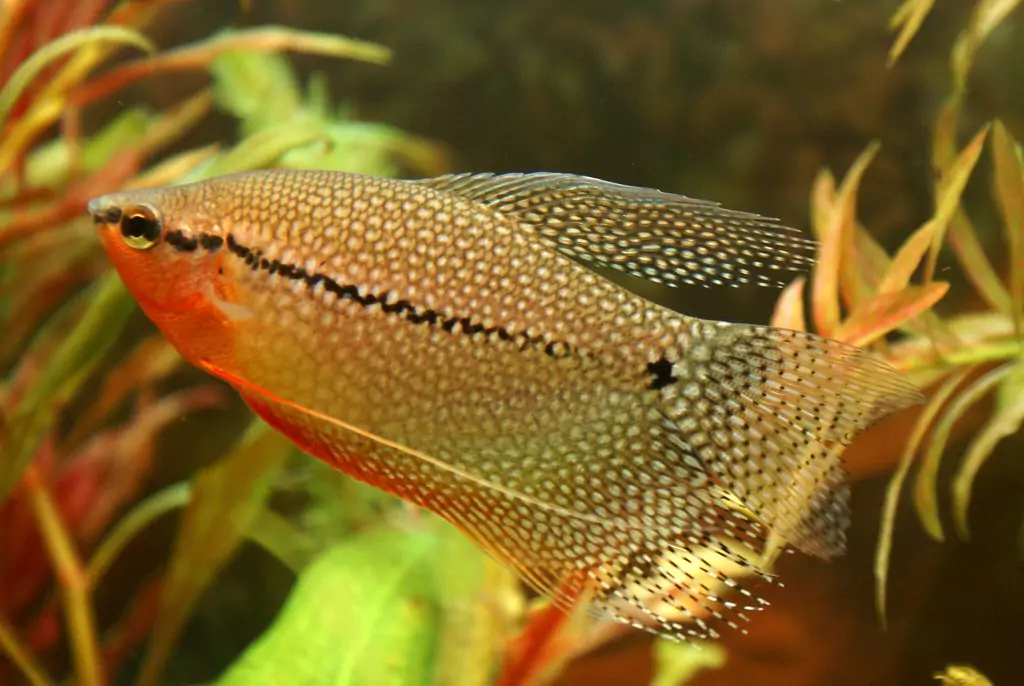
Unique Features and Colors
What sets Gouramis apart are their remarkable features and an extensive palette of colors. The intricate patterns on the bodies of Gouramis, coupled with vibrant hues ranging from iridescent blues to fiery reds, transform them into living artworks. Their elongated fins and graceful movements further enhance the visual spectacle, ensuring that a Gourami aquarium becomes a captivating centerpiece in any setting.
Ideal Tank Conditions and Care Tips
Creating a conducive environment for Gouramis is key to their well-being. These fish thrive in moderately planted tanks with gentle filtration, mimicking their natural habitats. Maintaining stable water parameters, including temperature and pH levels, is crucial for their health. Gouramis are known for their compatibility with various tank mates, but attention to territorial behavior should be observed. Offering a balanced diet, rich in both pellets and live foods, contributes to their overall vitality.
Suggested Live Foods for Gourami
Enhance the diet of your Gouramis with a selection of suggested live foods that cater to their omnivorous nature. Live foods, such as brine shrimp, daphnia, and mosquito larvae, provide essential nutrients and promote natural hunting behaviors. Supplementing their diet with high-quality Gourami pellets, flakes, and freeze-dried foods ensures a well-rounded nutritional profile. Regular feeding schedules and portion control contribute to the health, vibrancy, and longevity of these captivating freshwater companions.
This comprehensive guide aims to provide both insights and practical tips, ensuring that your experience with Gouramis is not only visually spectacular but also rewarding in terms of the well-being of these captivating aquatic companions.
Betta Fish
Overview of Betta Fish Popularity
Betta fish, often referred to as Siamese fighting fish, have risen to unparalleled popularity in the realm of aquarium keeping. Revered for their captivating beauty and fascinating behaviors, Betta fish have become cherished companions for enthusiasts seeking a perfect blend of aesthetics and personality in their aquatic ecosystems.

Vibrant Colors and Elaborate Fins
The hallmark of Betta fish lies in their mesmerizing array of colors and elaborate fins. From radiant blues and fiery reds to subtle pastels, Betta fish showcase a spectrum that rivals the most vibrant of tropical flowers. Their elaborate fins, resembling delicate works of art, add a touch of elegance to their graceful movements. Betta fish enthusiasts often find themselves captivated by the kaleidoscope of colors and the flowing, intricate fin displays that these fish effortlessly exhibit.
Tips for Betta Fish Care and Tank Setup
Optimal care for Betta fish begins with a carefully crafted tank environment. Betta fish thrive in spacious yet well-planted tanks with gentle filtration. Maintaining a consistent water temperature within the recommended range is essential, as these tropical fish are sensitive to temperature fluctuations. Betta fish are known for their individualistic nature, and providing each with its own space helps prevent territorial conflicts. A well-balanced diet, including high-quality Betta pellets and occasional live or frozen foods, contributes to their overall health and vitality.
Suggested Live Foods for Betta Fish
Elevate the diet of your Betta fish by incorporating suggested live foods that cater to their carnivorous preferences. Live foods such as brine shrimp, daphnia, and mosquito larvae not only provide essential nutrients but also stimulate their natural hunting behaviors. Adding variety to their diet with high-quality Betta pellets and occasional treats ensures a well-rounded nutritional profile.
This comprehensive guide aims to provide valuable insights and practical tips, enabling you to embark on a rewarding journey with Betta fish. Whether you’re a seasoned Betta enthusiast or a newcomer to the world of aquarium keeping, this exploration of Betta fish promises to enhance your understanding and appreciation for these remarkable aquatic companions.
Discus Fish
Description of Discus Fish Appearance
Discus fish, hailed as the kings of the aquarium, boast a regal appearance that captures the attention of enthusiasts worldwide. Recognized for their distinctive circular shape, vibrant coloration, and striking patterns, Discus fish epitomize elegance in aquatic aesthetics. The symphony of hues adorning their bodies, from rich reds and blues to earthy browns, transforms any aquarium into a captivating spectacle. Their fins, gracefully extended, contribute to their majestic demeanor, making Discus fish a prized addition for those seeking a touch of grandeur in their aquatic haven.
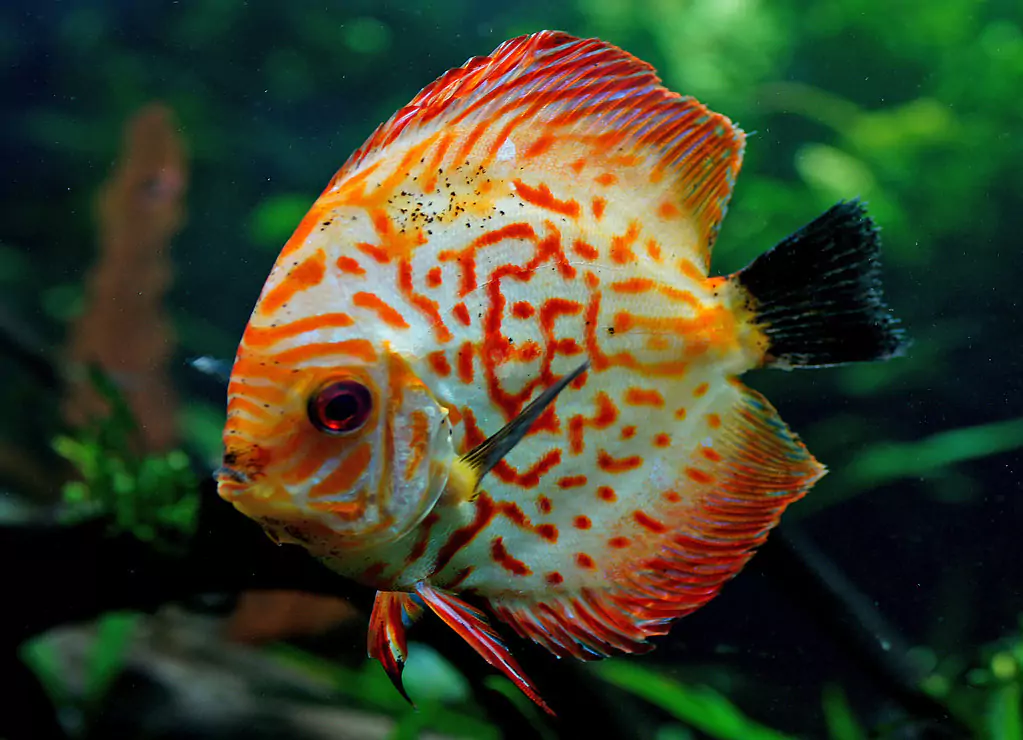
Considerations for Maintaining Discus Fish
The allure of Discus fish comes with a commitment to providing meticulous care. These remarkable fish thrive in spacious aquariums with stable water conditions. Due to their unique shape and size, a well-designed tank with ample swimming space and hiding spots is crucial. Discus fish are known for their social nature, but care should be taken to monitor their interactions to prevent conflicts. Offering a diet rich in protein, including specially formulated Discus pellets and live or frozen foods, supports their growth and enhances their vibrant coloration.
Importance of Water Quality for Discus Fish
The cornerstone of Discus fish care lies in maintaining impeccable water quality. Given their sensitivity to environmental changes, a vigilant approach to water parameters is paramount. Consistency in temperature, pH levels, and water hardness is essential to mimic the conditions of their native Amazon River habitats. Regular water testing and partial water changes contribute to a stable and pristine environment, reducing stress and promoting the overall health and longevity of Discus fish.
Suggested Live Foods for Discus Fish
Elevate the diet of your Discus fish with a selection of suggested live foods, providing a culinary experience that meets their nutritional needs. Live foods such as bloodworms, brine shrimp, and daphnia not only offer essential proteins but also stimulate natural hunting behaviors. These live treats, complemented by high-quality Discus pellets and flakes, contribute to the overall health, vibrancy, and happiness of these majestic fish.
This comprehensive guide aims to shed light on the captivating world of Discus fish, offering insights into their unique appearance and the nuanced care required for their well-being. Whether you are a seasoned Discus enthusiast or embarking on a new venture, this exploration promises to deepen your appreciation for these majestic aquatic companions and guide you on a path to creating a thriving Discus aquarium.
Angelfish
Introduction to Angelfish Varieties
Angelfish, revered for their majestic presence and distinctive beauty, encompass a diverse array of varieties that enrich the aquarium landscape. From the classic Pterophyllum scalare to more exotic strains, each variety brings a unique charm. The Marble Angelfish, Veil Angelfish, and Albino Angelfish are just a glimpse into the kaleidoscope of options available to enthusiasts. This introduction to Angelfish varieties sets the stage for a captivating exploration of their individual characteristics and the artistry they contribute to aquarium aesthetics.
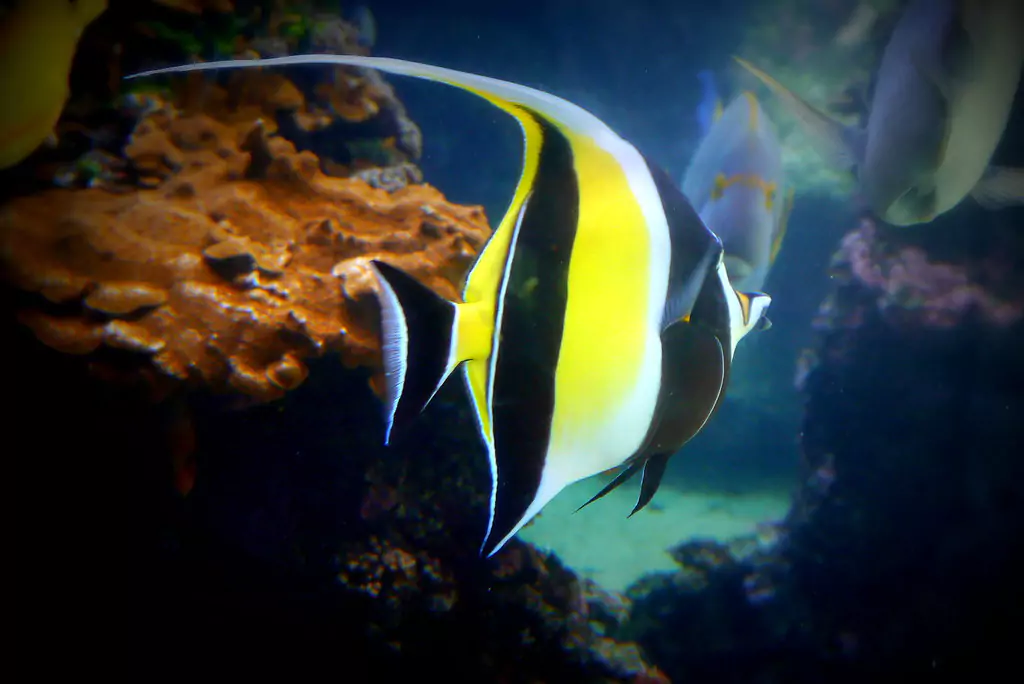
Striking Fin Shapes and Color Patterns
The allure of Angelfish extends beyond their varieties to the captivating fin shapes and color patterns that define them. Their long, graceful fins, reminiscent of delicate feathers, add an ethereal quality to their movements. The color palette ranges from bold blacks and silvers to vibrant oranges and yellows, creating a visual symphony within the aquarium. Understanding the nuances of these fin shapes and color patterns allows enthusiasts to appreciate the intricacies that make Angelfish a true centerpiece in any aquatic setting.
Suitable Tank Mates and Habitat Recommendations
Harmony within the aquarium hinges on thoughtful consideration of tank mates and habitat. Angelfish, while possessing a majestic aura, are known for their amicable nature. Compatible tank mates, such as Tetras and Corydoras, create a balanced community. A well-planted tank with ample swimming space and strategically placed decorations mimics the Angelfish’s natural environment. Providing sufficient hiding spots contributes to their sense of security, fostering a tranquil and thriving habitat.
Suggested Live Foods for Angelfish
Enhance the diet of your Angelfish with a selection of suggested live foods, offering a culinary experience that aligns with their natural preferences. Live foods such as brine shrimp, daphnia, and bloodworms provide essential proteins and stimulate their hunting instincts. Complementing their diet with high-quality Angelfish pellets and flakes ensures a balanced nutritional profile.
This comprehensive guide aims to delve into the captivating world of Angelfish, unraveling the intricacies of their varieties, fin shapes, and habitat dynamics. Whether you are a seasoned Angelfish enthusiast or a newcomer to the aquatic realm, this exploration promises to deepen your understanding and appreciation for these majestic aquatic companions, guiding you toward creating an aquarium that reflects the splendor of Angelfish in all its glory.
Rainbowfish
Overview of Rainbowfish Species
The world of aquariums is enriched by the vibrant diversity of Rainbowfish species, each contributing its unique charm to aquatic landscapes. Hailing from regions like Australia and New Guinea, these fish are known for their dazzling colors and engaging behaviors. From the iconic Melanotaenia family to the iridescence of the Glossolepis varieties, the Rainbowfish spectrum offers a palette of options that elevate any aquarium to a realm of living art.

Vivid Colors and Unique Behaviors
The hallmark of Rainbowfish lies in their vivid colors and captivating behaviors. Their iridescent scales create a shimmering effect, resembling the colors of the rainbow, hence the name. The males, in particular, showcase vibrant hues during courtship displays, creating a mesmerizing spectacle. Beyond their visual appeal, Rainbowfish are celebrated for their social nature, engaging in lively group dynamics that add a dynamic and entertaining element to aquarium life. Witnessing their synchronized schooling behavior and playful interactions is a testament to the charm these fish bring to the aquatic setting.
Water Parameters for Rainbowfish
Creating an optimal environment for Rainbowfish requires careful consideration of water parameters. These fish thrive in slightly alkaline to neutral water with stable pH levels. Maintaining a temperature range between 75°F to 80°F (24°C to 27°C) mimics their native habitats. Adequate filtration is essential to ensure water quality, as Rainbowfish are sensitive to changes in ammonia and nitrate levels. Providing a well-aerated and spacious tank, with plenty of swimming room and hiding spaces, fosters an environment where Rainbowfish can display their natural behaviors and flourish in vibrant health.
Suggested Live Foods for Rainbowfish
Elevate the diet of your Rainbowfish with a selection of suggested live foods, offering a culinary experience that aligns with their omnivorous nature. Live foods such as brine shrimp, daphnia, and mosquito larvae provide essential proteins and contribute to the vibrant colors of Rainbowfish. Complementing their diet with high-quality Rainbowfish pellets and flakes ensures a well-rounded nutritional profile.
This comprehensive guide aims to provide insights into the captivating world of Rainbowfish, showcasing their diverse species, vibrant colors, and engaging behaviors. Whether you are an experienced aquarist or a newcomer to the world of aquarium keeping, this exploration promises to deepen your appreciation for these unique aquatic companions and guide you towards creating an aquarium that reflects the dazzling beauty and dynamic nature of Rainbowfish.
Killifish
Introduction to the World of Killifish
Dive into the fascinating world of Killifish, where diversity and beauty converge in aquatic splendor. Known for their captivating colors, unique behaviors, and a remarkable range of species, Killifish have become sought-after additions to aquariums. Originating from various regions worldwide, these fish boast distinctive traits that make them both intriguing and rewarding subjects for enthusiasts looking to explore the vibrant tapestry of the aquatic realm.
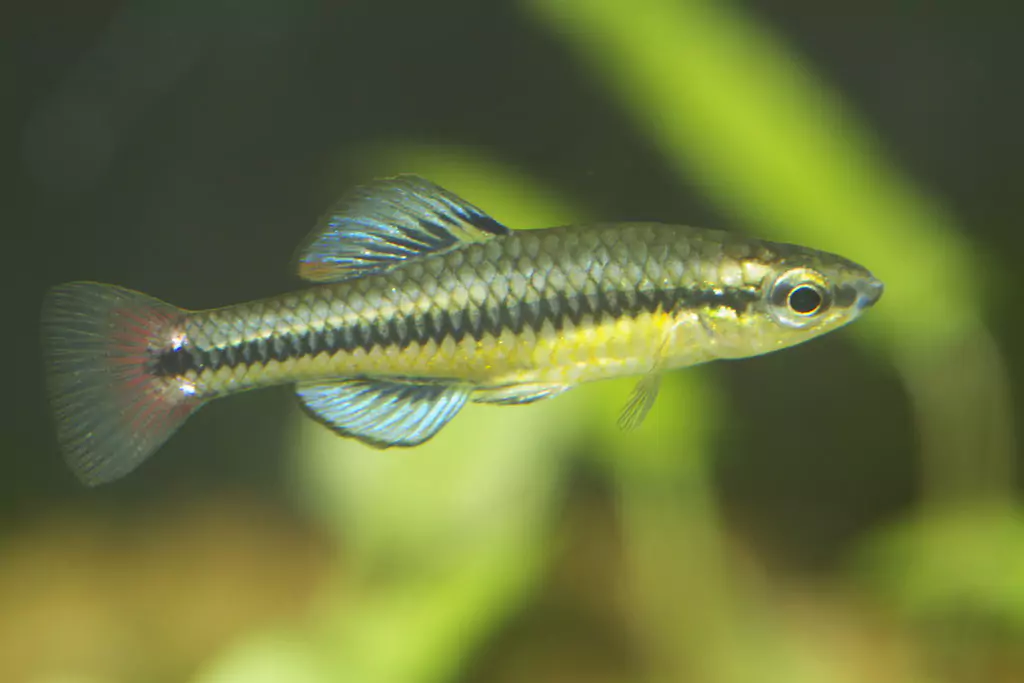
Distinctive Colors and Breeding Habits
Killifish captivate with their kaleidoscope of colors, ranging from bold reds and oranges to subtle pastels and intricate patterns. Their unique breeding habits add an extra layer of intrigue, with many species exhibiting annual killifish behavior. This involves laying eggs in temporary water bodies, allowing for an evolutionary adaptation that has shaped their life cycle. Understanding the colorful palette and breeding nuances of Killifish enriches the experience of keeping these exceptional fish in an aquarium setting.
Tips for Creating a Suitable Environment for Killifish
Crafting the ideal environment for Killifish involves thoughtful consideration of tank setup and water conditions. These fish thrive in well-planted aquariums with soft, slightly acidic water. Mimicking their natural habitats, incorporating leaf litter and fine substrate provides hiding places and enhances their well-being. Attention to water quality, including proper filtration and regular water changes, is paramount to creating a stable and healthy ecosystem for Killifish to flourish.
Recommended Plants for Killifish Tanks
Elevate your Killifish tank with a carefully curated selection of plants that complement their unique needs. Dense plants such as Java Moss and Amazon Sword provide shelter and create an aesthetically pleasing environment. Floating plants like Water Lettuce offer shade and mimic the shaded water bodies that some Killifish species favor for breeding. Discover our collection of recommended plants to transform your aquarium into a thriving ecosystem that caters to the specific requirements of these captivating fish.
Embark on a journey into the captivating world of Killifish with this comprehensive guide. Whether you’re a seasoned enthusiast or a newcomer to aquarium keeping, the exploration of Killifish promises to deepen your understanding and appreciation for these unique aquatic companions, guiding you towards creating an aquarium that reflects the vibrancy and diversity of the Killifish realm.
Tetra Fish
Overview of Popular Tetra Species
Delve into the captivating world of Tetra fish, where a multitude of species enchants aquarium enthusiasts with their vibrant colors and engaging behaviors. From the iconic Neon Tetra to the energetic Serpae Tetra, each species within the Tetra family brings a unique charm to aquariums. Originating from diverse regions, Tetras have become synonymous with community tanks, contributing to the lively and dynamic atmosphere that makes them a staple in aquatic hobbyist collections.

Schooling Behavior and Vibrant Schooling Displays
One of the defining features of Tetra fish is their innate schooling behavior, creating a spectacle of synchronized movements that captivates onlookers. Witness the enchanting ballet of Tetras as they navigate the aquarium in coordinated formations, displaying a dazzling array of colors. This schooling behavior not only adds a visual spectacle but also reflects the social nature of Tetras, making them ideal companions for those seeking a harmonious and visually dynamic aquarium environment.
Best Practices for Tetra Fish Care
Ensuring the well-being of Tetra fish involves adhering to best practices in care and maintenance. Tetras thrive in well-planted tanks with ample swimming space and hiding spots. Maintaining stable water conditions, including a neutral to slightly acidic pH, contributes to their health and vitality. Regular water changes and efficient filtration are essential for providing a clean and comfortable habitat. Offering a balanced diet, incorporating high-quality Tetra-specific food and occasional live or frozen treats, supports their vibrant colors and overall longevity.
Suggested Live Foods for Tetra Fish
Elevate the diet of your Tetra fish with a selection of suggested live foods, providing a culinary experience that aligns with their omnivorous nature. Live foods such as brine shrimp, daphnia, and mosquito larvae offer essential proteins and stimulate natural hunting behaviors. Complementing their diet with high-quality Tetra pellets and flakes ensures a well-rounded nutritional profile.
This comprehensive guide aims to unveil the allure of Tetra fish, offering insights into their diverse species, schooling behaviors, and best practices for optimal care. Whether you’re a seasoned Tetra enthusiast or embarking on a new aquatic venture, this exploration promises to deepen your appreciation for these dynamic and sociable aquatic companions. Discover the joy of Tetra keeping as you create an aquarium that mirrors the lively and colorful essence of the Tetra fish realm.
Corydoras Catfish
Introduction to Corydoras Catfish Characteristics
Embark on an exploration of the charming underwater world with Corydoras Catfish, beloved for their unique characteristics that make them endearing additions to aquariums. Recognizable by their distinctive armored appearance, Corydoras boast a range of species, each with its own captivating features. From the playful Corydoras paleatus to the eye-catching Corydoras sterbai, these catfish bring a delightful blend of personality and aesthetic appeal to aquatic environments.

Bottom-Dwelling Behavior and Social Interactions
Corydoras Catfish, renowned for their bottom-dwelling tendencies, add a dynamic layer to the aquarium ecosystem. Observe their endearing social behaviors as they navigate the substrate, forming tight-knit groups. Their playful interactions and synchronized movements create a captivating spectacle, offering enthusiasts a glimpse into the communal nature of these catfish. Witnessing their amicable interactions with tank mates adds to the charm, making Corydoras a delightful choice for community tanks.
Importance of Proper Substrate for Corydoras Catfish
A key consideration in providing optimal care for Corydoras Catfish lies in the selection of an appropriate substrate. These catfish possess delicate barbels that they use to search for food in the substrate. Choosing a fine and smooth substrate, such as sand or fine gravel, prevents abrasions and supports their natural foraging behaviors. Additionally, a soft substrate minimizes the risk of injury and stress, contributing to the overall well-being of Corydoras Catfish in the aquarium environment.
Suggested Live Foods for Corydoras Catfish
Elevate the diet of your Corydoras Catfish with a selection of suggested live foods, offering a culinary experience that aligns with their omnivorous nature. Live foods such as bloodworms, brine shrimp, and daphnia provide essential proteins and stimulate natural hunting behaviors. Complementing their diet with high-quality catfish pellets and flakes ensures a well-rounded nutritional profile.
This comprehensive guide aims to shed light on the captivating world of Corydoras Catfish, unveiling their unique characteristics, bottom-dwelling behaviors, and the significance of proper substrate selection. Whether you are a seasoned enthusiast or a newcomer to aquarium keeping, this exploration promises to deepen your appreciation for these delightful aquatic companions. Elevate your aquarium experience as you create a habitat that mirrors the playful and communal essence of Corydoras Catfish, contributing to the vibrant tapestry of the underwater world.
Archerfish
Unique Traits of Archerfish
Embark on a journey into the extraordinary world of Archerfish, where unique traits set these aquatic marvels apart. Recognizable by their sleek bodies and distinctive mouths, Archerfish showcase remarkable adaptations that make them a captivating addition to aquariums. With bulging eyes and a keen sense of precision, Archerfish exhibit traits that speak to both their elegance and their prowess as expert hunters.

Shooting Water to Catch Prey Behavior
One of the most enchanting behaviors of Archerfish lies in their exceptional hunting technique – shooting water to catch prey. Positioned beneath the water’s surface, Archerfish skillfully aim and release jets of water at insects or small prey perched on overhanging branches. Witnessing this precise and calculated water-spitting behavior is a testament to the intelligence and ingenuity of these aquatic sharpshooters, making them a unique and engaging species for dedicated aquarium enthusiasts.
Tank Setup Considerations for Archerfish
Creating an optimal habitat for Archerfish involves thoughtful consideration of tank setup. Archerfish thrive in spacious tanks with ample swimming room, as their hunting behavior requires sufficient space to execute their water-spitting technique. Vertical space is crucial, reflecting their natural environment with overhanging branches. Live or artificial plants provide additional hiding spots, fostering a sense of security. Maintaining a clean and well-aerated environment with proper filtration is essential to support the health and vitality of Archerfish.
Suggested Live Foods for Archerfish
Elevate the nutritional profile of your Archerfish diet with a selection of suggested live foods. Embracing their carnivorous nature, offer live insects such as crickets, mealworms, or small feeder fish. The active hunting behavior stimulated by live prey enriches the lives of Archerfish, promoting both mental and physical well-being. A varied diet, supplemented with high-quality commercial pellets or flakes, ensures a balanced nutrition profile for these remarkable aquatic hunters.
This comprehensive guide aims to unveil the distinctive traits, captivating behaviors, and considerations for creating an ideal habitat for Archerfish. Whether you are a seasoned aquarist or a newcomer to the world of aquarium keeping, this exploration promises to deepen your appreciation for these skilled water-spitting hunters. Transform your aquarium into a haven for Archerfish, where their unique traits and captivating behaviors become a focal point in the aquatic tapestry you create.
Electric Blue Acara
Unique Traits of Electric Blue Acara
Enter the enchanting realm of the Electric Blue Acara, a captivating freshwater fish distinguished by its unique traits. Standing out with an intense electric blue coloration, this cichlid species elevates aquarium aesthetics. Its distinctive hue covers scales, fins, and even the eyes, creating a visually striking presence in any aquatic setting. Beyond its vibrant appearance, the Electric Blue Acara is celebrated for its relatively peaceful temperament, making it a sought-after choice among aquarists.
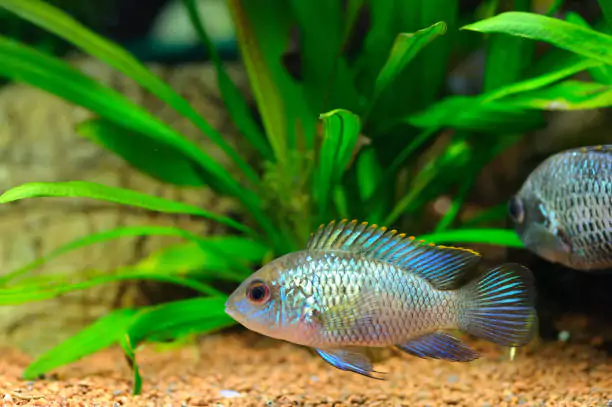
Size and Interesting Behavior
The Electric Blue Acara, while not reaching the imposing size of some cichlids, boasts a moderate size, typically around 6 to 7 inches (15 to 18 cm). What sets this fish apart is its interesting behavior, particularly during breeding. As pairs form, the Electric Blue Acara may become more territorial, displaying heightened colors and engaging in fascinating courtship rituals. This behavior adds an engaging dimension to the aquarium, allowing enthusiasts to witness the intricacies of cichlid social dynamics.
Tank Setup Considerations for Electric Blue Acara
Crafting an ideal environment for the Electric Blue Acara involves thoughtful considerations for tank setup. Provide a tank of at least 30 gallons to accommodate a pair comfortably. Maintain water parameters within a slightly acidic to neutral pH range (6.5-7.0) and a temperature range of 75-82°F (24-28°C). Incorporate soft substrates, such as sand, to emulate their natural habitat, and include driftwood, rocks, and plants to offer hiding spots and create territories. Ensuring ample swimming space contributes to the well-being of these captivating cichlids.
Suggested Live Foods for Electric Blue Acara
Enhance the vitality and coloration of Electric Blue Acaras by incorporating a variety of suggested live foods into their diet. These omnivorous cichlids readily accept high-quality pellets and flakes, but supplementing their diet with live or frozen foods adds nutritional diversity. Consider offering bloodworms, brine shrimp, and daphnia to satisfy their carnivorous instincts. A balanced diet contributes to their overall health, promoting vibrant colors and vitality.
This comprehensive guide aims to illuminate the unique traits, engaging behavior, and essential care considerations for Electric Blue Acaras. Whether you are an experienced cichlid enthusiast or venturing into the world of freshwater fishkeeping, this exploration promises to deepen your understanding and appreciation for these remarkable aquatic companions.
Conclusion
In concluding our journey through the aquatic tapestry of the top 10 coolest freshwater fish, we’ve delved into the vibrant realms of Gourami, Betta Fish, Discus Fish, Angelfish, Rainbowfish, Killifish, Tetra Fish, Corydoras Catfish, Archerfish, and the mesmerizing Electric Blue Acara. Each species, with its unique characteristics and behaviors, contributes to the kaleidoscope of life within freshwater aquariums.
As you embark on your own aquatic adventure, consider the diverse personalities and stunning aesthetics these fish bring to the table. From the graceful fins of Betta Fish to the dynamic schooling displays of Tetra Fish, there’s a world of wonder waiting to be explored in the depths of your aquarium.
Encouraging readers to not just observe but actively engage with these fascinating species fosters a deeper connection with the aquatic realm. Create an environment that mirrors the natural habitats of these fish, and witness the beauty of their colors, behaviors, and social interactions unfold. Remember, each fish is not merely an inhabitant of your aquarium but a living, breathing testament to the wonders of aquatic life.
As you navigate the waters of fishkeeping, we invite you to share your experiences, insights, and questions in the comments section below. Your journey might inspire others or spark engaging discussions within our community of enthusiasts. Share your tips on caring for these cool freshwater fish, recount memorable moments, or seek advice – the aquarium community is a vibrant space where knowledge flows and camaraderie thrives.
Join us in celebrating the diversity and beauty of freshwater fish. Whether you’re a seasoned hobbyist or a newcomer, the aquarium world welcomes you to explore, learn, and share in the collective joy of cultivating vibrant underwater ecosystems.
Happy fishkeeping, and may your aquariums be teeming with the vibrant life of these cool freshwater companions!
Additional Resources
In your quest for further knowledge and insights into freshwater fish species and the art of community tank management, explore the following reputable resources that serve as invaluable guides for both seasoned enthusiasts and newcomers to the aquatic hobby
- FishBase: Delve into the comprehensive database of FishBase, a trusted source for scientific information on various fish species. This resource provides detailed profiles, distribution maps, and biological data, offering a wealth of knowledge on the diverse freshwater fish you may encounter.
- Seriously Fish: Seriously Fish is a well-regarded platform that combines scientific accuracy with practical insights. Explore their species profiles, articles, and forums to deepen your understanding of individual fish species and gain valuable tips on maintaining a thriving community tank.
- Ken Schultz’s Field Guide to Freshwater Fish: This guide is a treasure trove for both novice and seasoned aquarists. Schultz’s expertise shines as he meticulously details a vast array of freshwater fish species, providing comprehensive insights into their biology, behavior, and habitat preferences. The guide serves as a valuable companion for aquarium enthusiasts, offering not only identification assistance but also practical guidance on caring for and appreciating these aquatic marvels. With vivid illustrations and a wealth of information, Ken Schultz’s Field Guide is an indispensable resource for anyone seeking a deeper understanding of the diverse world of freshwater fish.
As you embark on your fishkeeping journey, these resources serve as valuable companions, offering a blend of scientific knowledge and practical wisdom. Remember, the aquarium community is rich with experiences and shared learnings, and these platforms are excellent places to connect with fellow enthusiasts and expand your aquatic knowledge.
Frequently Asked Questions (FAQs)
How do I choose the right freshwater fish for my aquarium?
Selecting the ideal fish for your aquarium involves considering factors such as tank size, compatibility with other species, and your own experience level. Explore the unique characteristics of each fish in the top 10 list to make an informed decision.
What is the recommended tank setup for Gourami species?
Gouramis thrive in well-planted aquariums with soft, slightly acidic water. Provide hiding spots and ensure a tank size of at least 20 gallons to accommodate their graceful swimming habits. Explore our Gourami care guide for detailed recommendations.
How can I enhance the colors of Betta fish in my tank?
To intensify the vibrant colors of Betta fish, maintain a well-heated tank within the temperature range of 78-80°F. Offer a varied diet that includes high-quality Betta pellets, live foods like brine shrimp, and occasional treats. Adequate tank decorations and a stress-free environment also contribute to vibrant colors.
What is the social behavior of Corydoras Catfish?
Corydoras Catfish are known for their playful and social nature. They form tight-knit groups and engage in synchronized movements. Provide a suitable substrate, such as sand or fine gravel, to support their bottom-dwelling behaviors and create a harmonious community tank.
Are there any specific water parameters for Rainbowfish?
Rainbowfish thrive in slightly alkaline to neutral water with stable pH levels. Maintain a temperature range between 75°F to 80°F to mimic their native habitats. Adequate filtration and a well-aerated tank contribute to the well-being of Rainbowfish.


